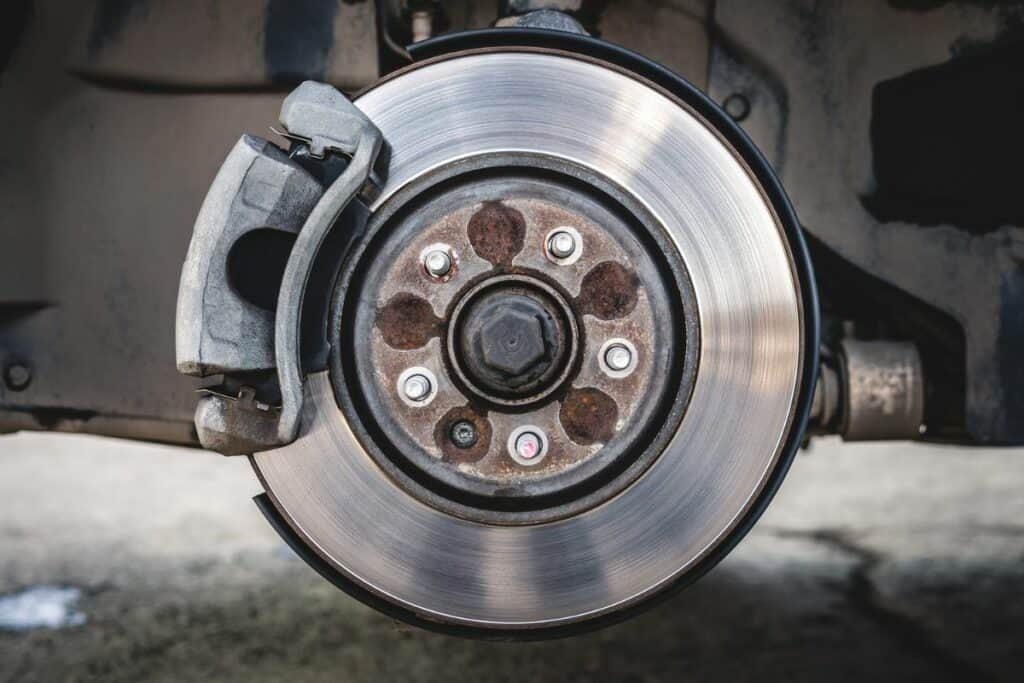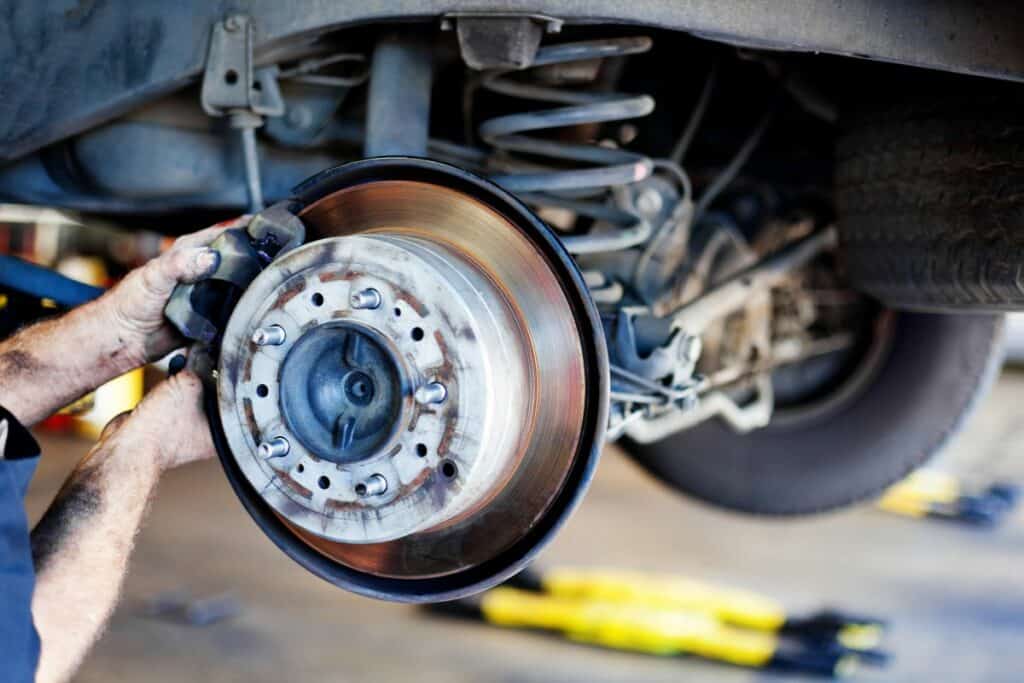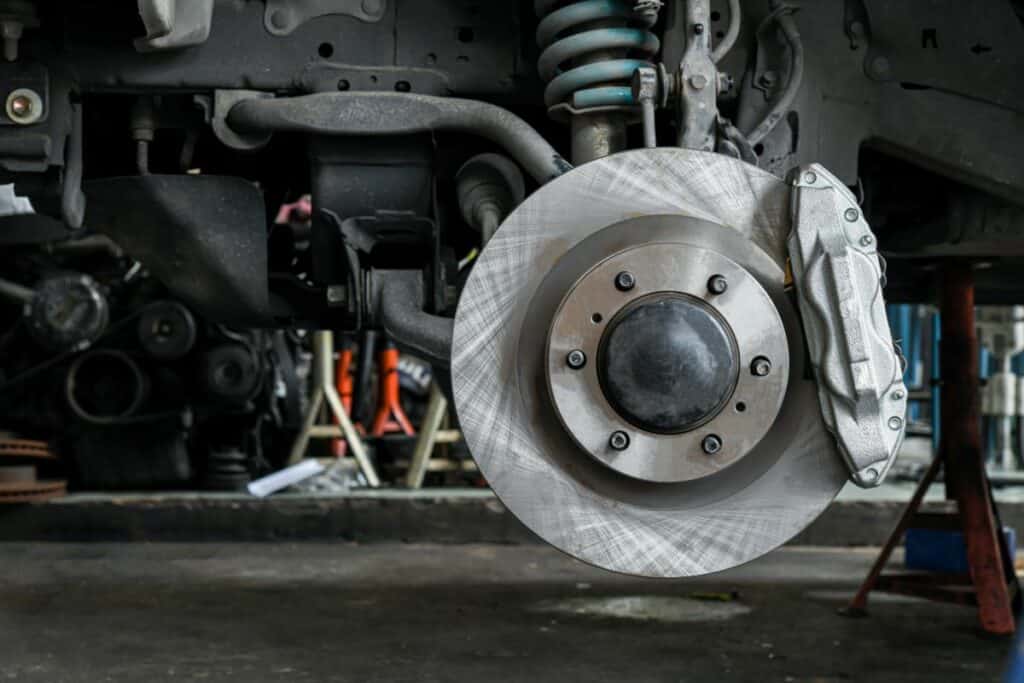Car brake discs are an essential part of your vehicle’s braking system and are responsible for stopping your car when you press the brake pedal. But how long should brake discs last?

The answer isn’t as simple as you might think. In this article, I’ll use my experience in the automotive world to explain the factors that can affect the lifespan of brake discs and give you an idea of how long you can expect them to last. I’ll also discuss how to know when it’s time to replace your brake discs and pads and what you can do to extend their lifespan.
Table of Contents
How Long Should Car Brake Discs Last?
When it comes to the lifespan of car brake discs, it depends on a variety of factors, such as driving habits, vehicle type, and the brake pads’ quality. Brake discs can last anywhere from 30,000 to 80,000 miles, but the average is around 50,000 miles.
It’s important to note that if you frequently drive in heavy traffic or hilly areas, your brake discs may wear out faster than if you drive primarily on highways. Additionally, if you tend to brake hard or frequently, your brake discs may wear out quicker. It’s best to practice safe and efficient driving habits to prolong the lifespan of your brake discs and ensure your vehicle is running at its best.
How to Know When your Brake Pads are Worn Out
Your brakes are one of the most essential safety features in your vehicle. Keeping them in good working order is crucial for ensuring safety, and the brake pads are one of the most essential components of your brakes. These will wear down over time, and it’s important to know the signs of when it’s time to replace them. Let’s look at some signs that your brake pads are worn out and need replacing.

1. When You Hear a Squealing or Screeching Noise
When applying the brakes, a squealing or screeching noise is one of the most obvious signs that your brake pads may be worn out. This noise is caused by a small metal tab on the brake pad that rubs against the disc and will alert you when your pads are getting low. If you hear this noise, it’s time to have your pads inspected and probably replaced.
2. Grinding Noise
Another sign of worn brake pads is a grinding noise when you apply the brakes. The metal of your disc rubbing against the metal of the brake pad causes this noise. It is a sign that the pads are worn down to the point where they can no longer function correctly and must be replaced immediately.
3. Vibrations when you Brake
Another sign of worn brake pads is a vibration in the brake pedal when you press it. This is caused by uneven wear on the pads, which can be brought about by various factors such as uneven disc wear or discs overheating as they become thinner. If you experience this, having your brakes inspected and possibly replaced is important.
4. Less Responsive Brakes
Another sign that your brake pads may be worn out is if you notice that your brakes feel less responsive than usual. If you have to press the pedal harder or longer than expected to get the desired brake effect, your pads will likely be worn down and need to be replaced as soon as possible.
It’s important to keep an eye out for these warning signs of worn brake pads to ensure the safety of yourself and your passengers. If you notice any of these signs, have your brake pads inspected by a trained professional. Don’t wait until it’s too late, as worn brake pads can lead to costly repairs and even accidents. Regularly checking your brake pads and keeping them in good working order is integral to maintaining your vehicle.
How to Make your Brake Pads Last Longer
Brake pads don’t last forever and must be replaced periodically. Let’s look at some of the top tips to make your brake pads last longer.

1. Check for Proper Alignment
One of the main causes of premature brake pad wear is improper alignment. When your wheels are not correctly aligned, it can cause uneven wear on your brake pads and can create vibrations when you brake. To prevent this, have your wheels aligned regularly. This will ensure that your brake pads wear evenly and last longer. It’s also important to check your alignment after hitting a pothole, as this can cause misalignment.
2. Use Engine Braking
Engine braking is when you use the engine to slow down your vehicle instead of using your brake pedal. This can be done by shifting into a lower gear when you’re going downhill or when you’re approaching a stop sign or traffic light. You don’t put pressure on your brake pads by using engine braking, which can help them last longer.
3. Avoid Sudden Stops
When you make sudden stops or brake hard, you’re putting extra pressure on your brake pads, which can cause them to wear out faster. Instead, try to anticipate when you’ll need to stop and brake gently. This will not only help your brake pads last longer but also make your driving experience more comfortable.
4. Drive Slower
Driving slower is a simple way to make your brake pads last longer. The faster you go, the more frequently you will have to use your brakes and press harder on your brake pedal, which will cause them to wear out more quickly. By slowing down, you’re reducing the amount of pressure on your brake pads when needed and prolonging their lifespan. This will also make your driving experience safer and more enjoyable.
Check our article on Why Doesn’t My Brake Caliper Piston Won’t Go Back In?
Conclusion
The lifespan of your car brake discs and pads can vary greatly depending on a number of factors, such as your driving habits and the quality of the parts. It’s essential to keep an eye on your brake parts’ wear or have them checked regularly by a professional to ensure they are functioning correctly and safely. Remember, brakes are one of your vehicle’s most important safety features, so don’t skimp on maintenance or replacement. Keep yourself and others on the road safe by keeping your brakes in top condition.
